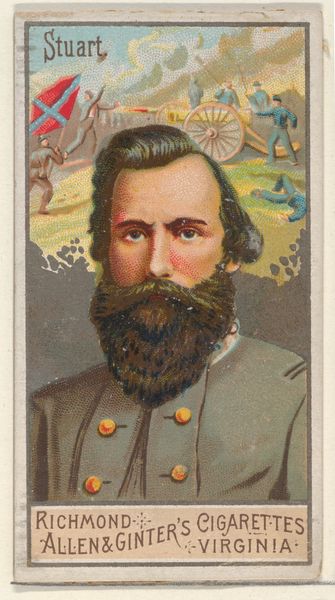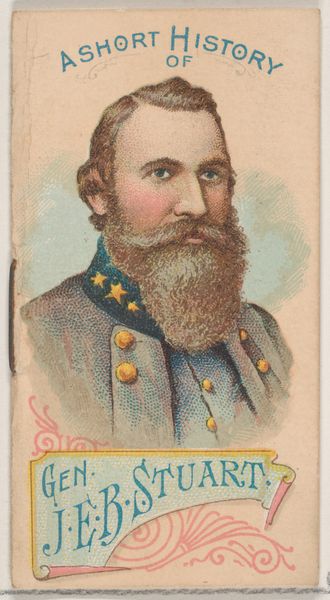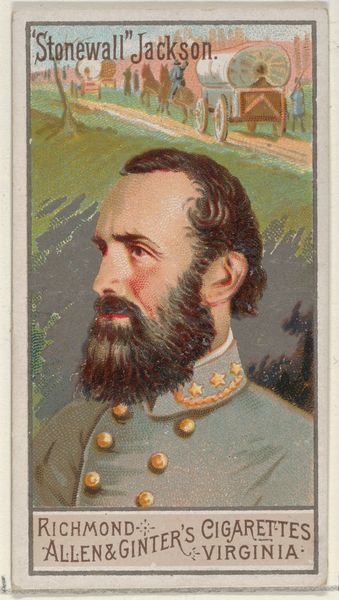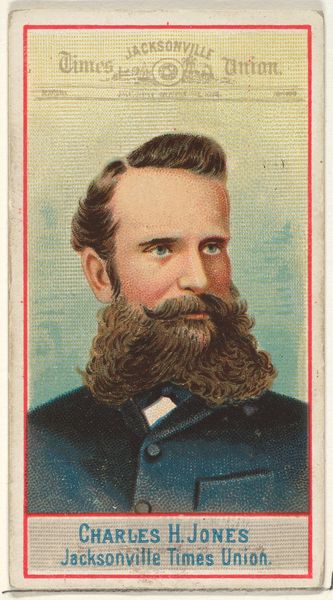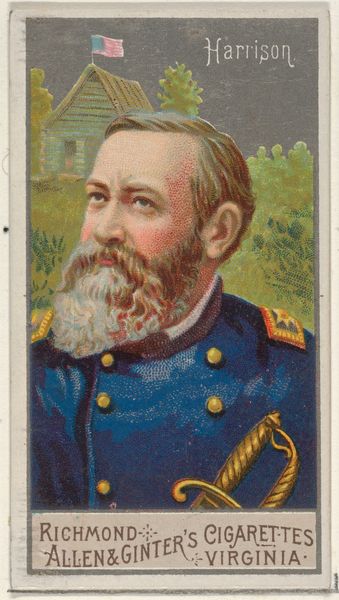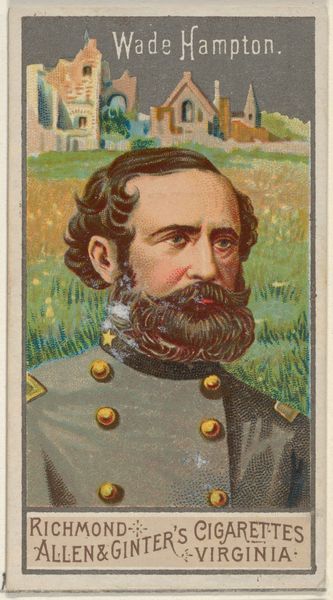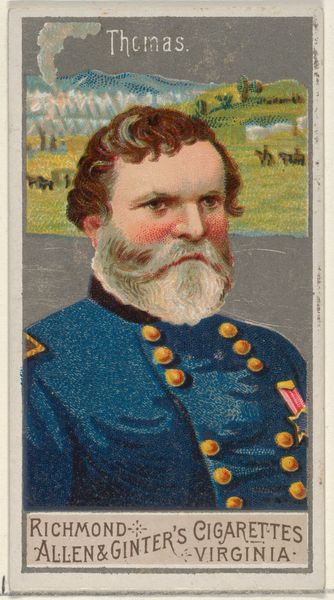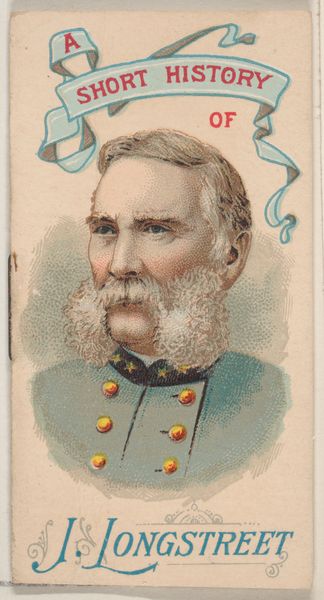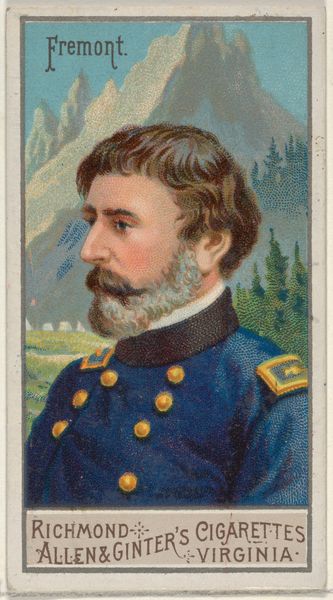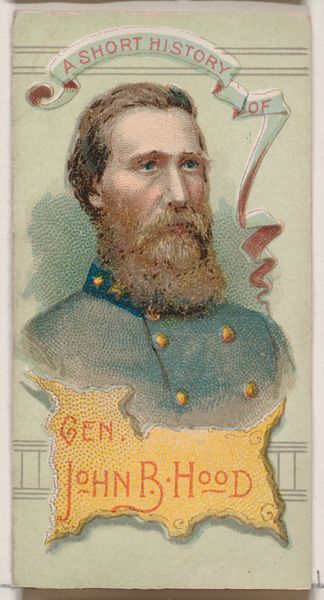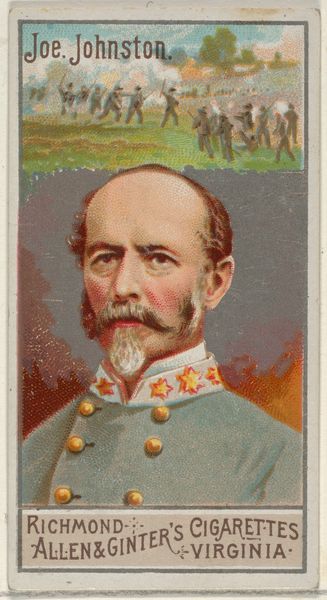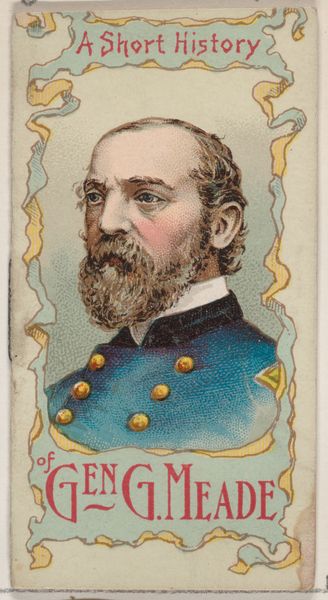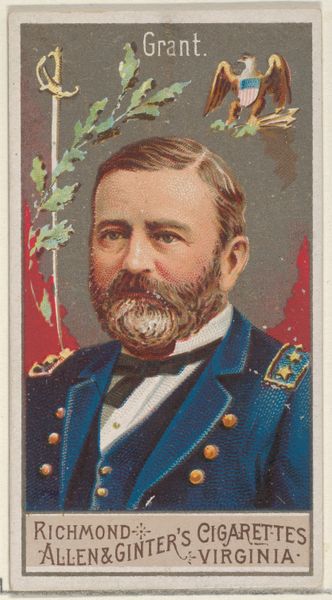
James Longstreet, from the Great Generals series (N15) for Allen & Ginter Cigarettes Brands 1888
0:00
0:00
drawing, print
#
portrait
#
drawing
# print
#
caricature
#
history-painting
#
academic-art
#
modernism
Dimensions: Sheet: 2 3/4 x 1 1/2 in. (7 x 3.8 cm)
Copyright: Public Domain
Curator: Here we have a curious little piece, a portrait of James Longstreet, made in 1888 by Allen & Ginter as part of their "Great Generals" series for cigarette cards. Editor: It's... diminutive! And the rosy cheeks give it a rather bizarre feel for a military portrait. The color palette is pastel and that battle scene in the back seems oddly out of place. Curator: Cigarette cards like these were hugely popular at the time. They were collected, traded, and served as a form of advertising and, dare I say, education on popular figures. Note the tension here; Longstreet, a Confederate general, commodified into a commercial product by a Richmond, Virginia-based company just a couple of decades after the Civil War. Editor: I'm drawn to the surface and printing. It’s not simply a reproduction, right? There's something almost lithographic, or even a drawing, that brings it up to more than mere commercial fodder. Was there much handwork involved? Who were the unacknowledged laborers making these cards in their Richmond factory? Curator: A crucial question to ask. Mass production meant these images circulated widely, shaping public perception. Longstreet's inclusion—a controversial figure even then, given his criticisms of Lee after Gettysburg—says a lot about the complexities of historical memory and reconciliation in the post-Reconstruction South. These small portraits helped form opinion through accessible formats. Editor: That muted, soft rendering almost works to diffuse the intensity of that history, though. I wonder, too, about the material qualities of this little card and the casual disposal rate, its ephemerality versus the heavy subject matter. Curator: Absolutely, the context is fascinating. Consider this image within the larger project of shaping historical narratives. The politics of image-making! And how did its status as a tobacco product further normalize or even glorify such a figure? It's a provocative thought. Editor: Provocative indeed. A simple cigarette card becomes this portal to so much wider analysis— production methods, labor and distribution. Thanks to an unassuming general.
Comments
No comments
Be the first to comment and join the conversation on the ultimate creative platform.
